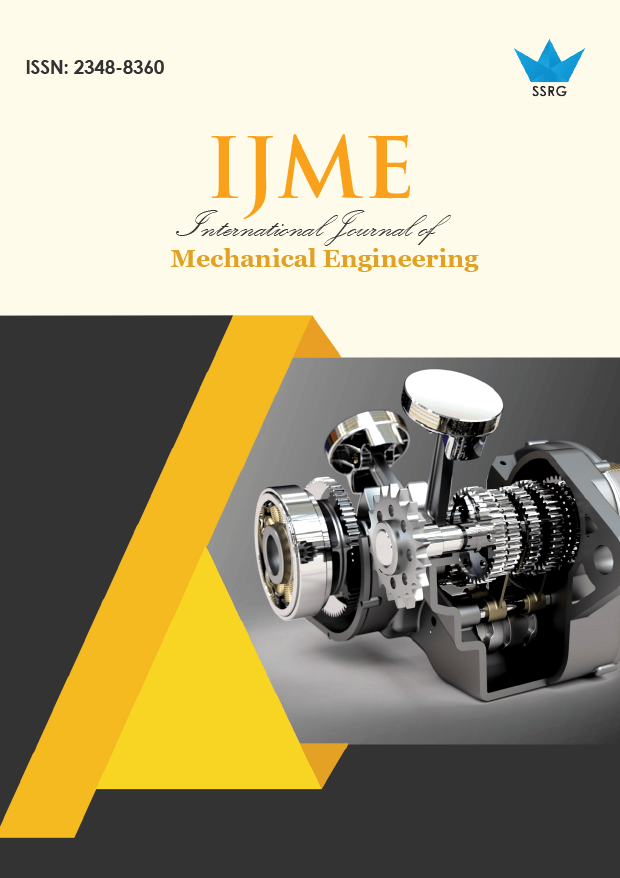Anti-seismic Performance Analysis of the Shielding Door in AP1000 Nuclear Power Plant

| International Journal of Mechanical Engineering |
| © 2016 by SSRG - IJME Journal |
| Volume 3 Issue 5 |
| Year of Publication : 2016 |
| Authors : Shanwen Zhang, Linlin Tang, Jianfeng Zhang, Haijun Zhang |
How to Cite?
Shanwen Zhang, Linlin Tang, Jianfeng Zhang, Haijun Zhang, "Anti-seismic Performance Analysis of the Shielding Door in AP1000 Nuclear Power Plant," SSRG International Journal of Mechanical Engineering, vol. 3, no. 5, pp. 29-34, 2016. Crossref, https://doi.org/10.14445/23488360/IJME-V3I5P109
Abstract:
The shielding door is the important protective equipment of AP1000 nuclear power station. When the plant is not in the operation, it is mainly subjected to its own gravity, wind load, impact load from the heavy projectile, temperature load from the fire disaster and the seismic load from the earthquake. Taking the shielding door as the research object and using the security shut-down earthquake load as the design seismic load, the anti-seismic performance of the shielding door is analyzed and evaluated under the seismic load, respectively by two methods: static method and response spectrum method. The results show that the whole structure of the shielding door can meet the requirement of ASME; Using the static method, the worst direction of the horizontal acceleration is the direction of the angle of 45o which is the angle between one horizontal acceleration and the X axis. Spectrum analysis results show that the vertical acceleration of response spectrum contribution to seismic load, the stress and displacement is very small; Calculating results of the two methods are close, but the static method is a bit conservative.
Keywords:
AP1000; shielding door; anti-seismic performance
References:
[1] C. Queral, J. Montero-Mayorga, J. Gonzalez-Cadelo, G. Jimenez, AP1000 (R) Large-Break LOCA BEPU analysis with TRACE code, Ann. Nucl. Energy, 85 (2015) 576-589.
[2] J. Montero-Mayorga, C. Queral, J. Gonzalez-Cadelo, AP1000 (R) SBLOCA simulations with TRACE code, Ann. Nucl. Energy, 75 (2015) 87-100.
[3] R.A. Matzie, AP1000 will meet the challenges of near-term deployment, Nuclear Engineering and Design, 238 (2008) 1856-1862.
[4] B. Sutharshan, M. Mutyala, R.P. Vijuk, A. Mishra, The Ap1000TM Reactor: Passive Safety And Modular Design, Energy Procedia, 7 (2011) 293-302.
[5] B. Sutharshan, M. Mutyala, R.P. Vijuk, A. Mishra, The AP1000TM Reactor: Passive Safety and Modular Design, Energy Procedia, 7, (2011), 293–302.
[6] E.B. Shi, C.Y. Fang, C. Wang, G.L. Xia, C.N. Zhao, The investigation of Passive Accident Mitigation Scheme for advanced PWR NPP, Ann. Nucl. Energy, 85 (2015) 590-596.
[7] J. Yang, W.W. Wang, S.Z. Qiu, W.X. Tian, G.H. Su, Y.W. Wu, Simulation and analysis on 10-in. cold leg small break LOCA for AP1000, Ann. Nucl. Energy, 46 (2012) 81-89.
[8] Chen Da. Nuclear Energy and Nuclear Safety Analysis and Reflection About Fukushima Nuclear Accident. Journal of Nanjing University of Aeronautics & Astronautics, 2012 44(05) 597-602. (in Chinese)
[9] Feng Ding-guo. Engineering structure seismic. Beijing: Seismological Press, 2002. (in Chinese)
[10] Ministry of Construction of the People's Republic of China. Nuclear power plant seismic design specification GB50267- 97. Beijing :Standards Press of China, 1997. (in Chinese)
[11] S. Otani. Earthquake Resistant Design of Reinforced Concrete Buildings Past and Future. Proceedings First International Conference on Concrete & Development C & D, 2001 28(1) 3-24.
[12] Hu yu-xian. Earthquake engineering in China fifty years. Journal of building structures, 1999 (10) 22-25. (in Chinese)
[13] WEN Jinn, LU Yan, XU Yu, et al. Seismic Analysis of Auxiliary Feedwater System Tank in Nuclear Power Plant. Atomic Energy Science and Technology, 2015 (05) 897-902. (in Chinese)

 10.14445/23488360/IJME-V3I5P109
10.14445/23488360/IJME-V3I5P109